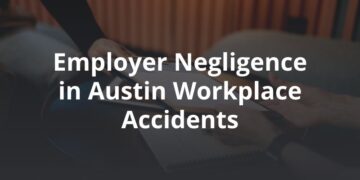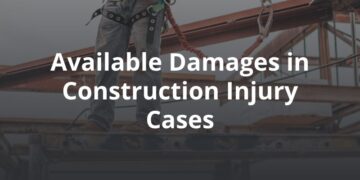The area of personal injury law is quite broad, and it encompasses many different types of potential cases. A personal injury matter arises when a person suffers injury as a result of another party’s actions. In many cases, the law provides a civil remedy, so that the injured party can recover for damages they suffered.
Personal injury matters can deal with any number of topics, including:
- Motor vehicle accidents
- Work injuries
- Negligence and fault liability
- Malpractice
- Premises liability
- Product liability
- Wrongful death
Bringing a Personal Injury Claim
Generally, the injured party — known in a court case as the plaintiff — brings a lawsuit against the other party — the defendant — in a state court. This is because most personal injury matters involve some form of negligence, which is typically a state law matter. In some cases, a personal injury claim might wind up in a federal court — usually because there is a federal law at issue or the parties are from different states, with a high threshold of damages involved – but most personal injury matters are filed in state courts.
Before filing your claim, jurisdiction must be established. This entails making sure that the defendant can be brought to answer the claims in the state court in which they are filed. Basically, a defendant needs to have some meaningful relationship to the state — either through residence or domicile, a connection to the case, or another way that is permissible within the state’s rules. Each state has its own rules of civil procedure, and those rules will govern the personal injury lawsuit process in court.
Steps in a Personal Injury Case
Let’s take a look at the personal injury lawsuit steps that are involved in most cases:
- Initial meeting with your attorney. During this meeting, your attorney will discuss your options and rights, advise you of the best courses of action, interview you regarding the facts of your accident, and discuss representation details including attorney’s fees.
- Initial investigation and fact-gathering. In this stage, your attorney’s office will investigate the facts of your accident, interview witnesses, and gather documents and other evidence to help prove your case.
- Filing of the pleadings. These are the initial documents filed in court, which set forth the claims and defenses of the parties. Generally, a court case begins with the filing of the plaintiff’s Complaint, to which the defendant needs to file an Answer.
- Service of process. This step of the proceedings ensures that the defendant receives adequate notice of the claims against them.
- Discovery. This is the formal exchange of information between the parties, and it is performed through various devices, including depositions and requests for documents. Discovery allows both sides to seek and receive relevant information from each other, leveling the playing field by providing for the exchange of important documents, statements, and other information.
- Pretrial motions. A motion is a petition that asks the court for something, and there are several motions that might be filed at this stage. One common motion, filed by the defendant, asks to dismiss the claims for lack of a valid case.
- Settlement negotiations. During this process, your attorney will negotiate with the other party’s counsel, as well as any insurance companies involved. The goal is to come to a mutually acceptable settlement, allowing the parties to resolve the case outside of court. Should these negotiations not yield a settlement, the case will move forward to trial.
- Pretrial conferences. This step generally requires both parties to meet for a conference, where they will discuss the central issues, and the evidence and witnesses they are seeking to present at trial along with other considerations that are set out by the state’s rules of procedure.
- Trial. During this step, the parties will present their case to either a civil jury or a judge. Generally, they begin with their opening statements. Then, the parties move on to the presentation of their evidence and witness testimony, followed by their closing statements.
- Verdict and final judgment. If there is a jury trial, the jury will deliberate and render its verdict, essentially choosing the side that wins the case. The judge issues a final judgment.
For more information about what’s typically needed in personal injury cases, check out our personal injury case checklist.
What Are the Possible Outcomes, and How Do They Occur?
There are many different outcomes that can happen during the personal injury lawsuit process. For example:
- A case may be dismissed, based on a motion by the defendant, if the court finds that there are no grounds for the lawsuit.
- A default judgment can be issued if the defendant fails to respond to the allegations of the Complaint.
- A case might be settled outside of court through negotiation, mediation, or another form of alternative dispute resolution.
- After a full trial, a jury verdict can be issued for one of the parties, essentially determining the winner of the lawsuit.
How Can FVF Help?
There can be numerous steps in a personal injury lawsuit, and many of them might involve complicated issues of law and procedure. FVF strives to educate clients about the personal injury lawsuit process. If you would like more information about what you can expect during the process, or would like to discuss your potential claim, contact us today to set up a consultation.







